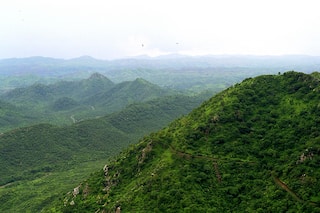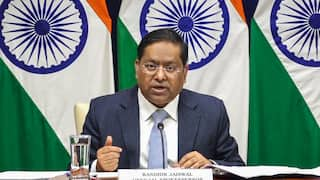Rabindra Jayanti: 8 Facts About Rabindranath Tagore
Rabindranath Tagore is widely recognised as one of the most influential figures in shaping modern India. Known as 'Kobiguru', he transformed Bengali art and literature by rejecting rigid classical forms

Rabindra Jayanti: The birth anniversary of Rabindranath Tagore- the Bengali polymath, who was a poet, a writer, a playwright, a composer, a social reformer and a painter is celebrated in Bengal on 'Pochishe Boishakh'. However, as per the English calendar, his birthday falls on May 7, but in Bengal it is celebrated on the corresponding English Calendar date of 'Pochishe Boishakh'. This year, it is being celebrated on May 8, marking its 163rd birth anniversary.
Known as 'Kobiguru' or 'Biswakobi', Tagore transformed Bengali art and literature by rejecting rigid classical forms and defying language conventions. His best-known works include Gitanjali (Song Offerings), Gora (Fair-Faced), and Ghare-Baire (The Home and the World), and his verse, short stories, and novels have been praised for their lyricism, colloquialism, and naturalism. Tagore's compositions have also been chosen as national anthems by two countries: India ('Jana Gana Mana') and Bangladesh ('Amar Shonar Bangla').
Tagore left us for the heavenly abode on August 7, 1941, gifting us songs, stories and poems to cherish for generations to come. today, on his birth anniversary, let's have a look at 10 facts about him:
8 Facts About Rabindranath Tagore
1. His Nick Names: Rabindranath Tagore was widely recognised as 'the Bard of Bengal.' Apart from this, he was also known as Rabi, Gurudeb, Kobiguru, and Biswokobi. Another name by which he was known was 'Bhanusingha'- a pseudonym under which he wrote his first substantial poems titled 'Bhanusimha Thakurer Padabali' in Brajabuli at the ag of 16.
2. A Young Genius: Continuing the rich tapestry of his family's talent, he went forward carrying the art forms. He started composing poetry when he was just 8 years old. His family has several examples of successful personalities.
Dwijendranath, his eldest brother, was both a philosopher and poet; Satyendranath, another brother, became the first Indian in the Indian Civil Services, a domain predominantly European; Jyotirindranath excelled in music, composition, and playwriting; and his sister, Swarnakumari, was a novelist.
3. His Education In England: His father wanted him to become a lawyer, which led to his enrollment in a school in England in 1878. He studied law for a short time at University College, London, but as he switched his focus to Shakespeare's plays, he returned to India in 1880 without obtaining any degrees.
4. Composer Of National Anthems: Tagore's compositions have also been chosen as national anthems by two countries: India ('Jana Gana Mana') and Bangladesh ('Amar Shonar Bangla'). In addition, he also inspired the national anthem of Sri Lanka, 'Sri Lanka Matha'.
5. Tagore And Albert Einstein: Tagore and Albert Einstein first met on July 14, 1930, having a conversation about the essence of reality. Their opinions were very different, despite that, they respected each other's ideologies.
Their meetings were very famous in the media at that time and The New York Times, used to write articles about the meeting of these two celebrities.
6. The first Asian To Win The Nobel Prize: In 1913, Rabindranath Tagore received the Nobel Prize for Literature, becoming its first Asian and non-European recipient. According to the Nobel website, the Nobel Prize in Literature 1913 was given to Tagore "because of his profoundly sensitive, fresh and beautiful verse, by which, with consummate skill, he has made his poetic thought, expressed in his own English words, a part of the literature of the West".
Tagore's Nobel Prize was awarded for his Bengali poetry collection, Gitanjali, which had been translated into English. The central theme of Gitanjali is devotion, comprising 156 poems in the original Bengali version published in 1910, and 103 poems in the English version published in 1912.
7. Nobel Prize Stolen: Rabindranath Tagore’s Nobel Prize was stolen from Visva-Bharati University in 2004. The Swedish Academy presented two replicas of the award to Visva-Bharati University, one made of gold and the other made of bronze.
8. Tagore Museums: There are eight museums dedicated to Rabindranath Tagore— three in India and five in Bangladesh. The ones in India are: Rabindra Bharati Museum in Kolkata at his ancestral home in Jorasanko Thakur Bari, Rabindra Bhavan Museum at the Vishwa-Bharti University in Shantiniketan, and the Rabindra Museum at a house he once stayed in Mungpoo, near Kalimpong.






































